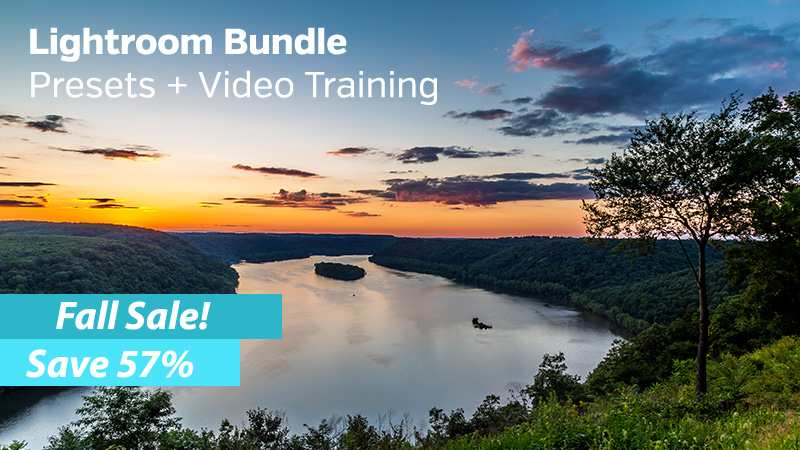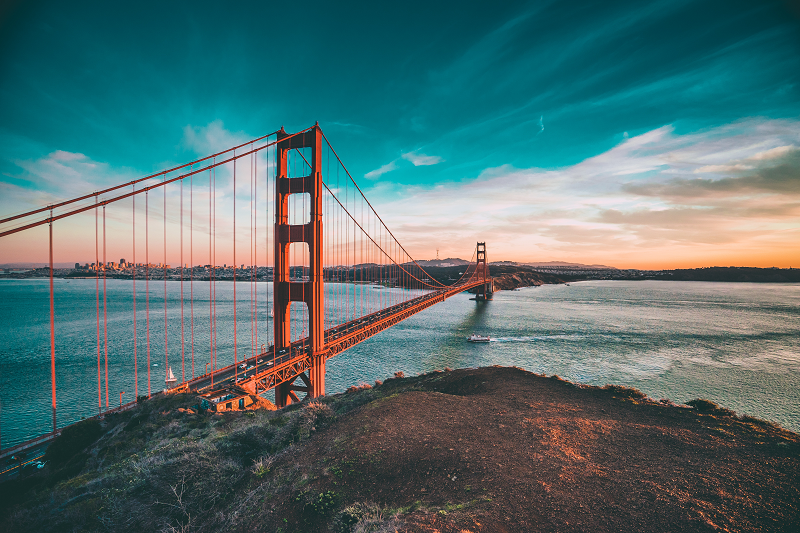
Photo by: Joseph Barrientos
When you think of adding some extra drama or flair to your photography, incorporating the sky might not be the first thing that comes to mind –but perhaps it should be!
Looking to incorporate more sky into your landscape images can be a great way to add a sense of drama, excitement, and beauty to your images. We all know that a beautiful sunrise can make for a photogenic feature, but the truth is there are plenty of exciting opportunities to capture amazing images of the sky –and not just at sunset. Capturing images just before or after a storm, for example, or looking to create beautiful long-exposure photography with slow-moving clouds are just two examples of capturing the spectacular sky in all of its beauty.
Far from serving as simply a backdrop, the sky can prove to be a vital addition to your images –helping to add a sense of excitement or even perspective to your images. If you’re looking to create spectacular landscape images –here are some tips that will help to get you started.
Start looking up!
Time It Right
When it comes to capturing the sky, timing is everything. While there’s no way you can truly predict something like a beautiful sunset or a spectacularly light-drenched rain shower, you can make an educated guess, and increase your chances of arriving on-location at an ideal time. Paying attention to sunrise and sunset times, as well as weather, and learning which patterns tend to result in vibrant, colorful sunsets is a great place to start. And as you familiarize yourself with the changes in the sky you’ll soon discover which conditions tend to produce the most vibrant, photogenic results. The sky can change quickly so you’ll want to arrive early, and stick around a bit as the atmosphere transforms.
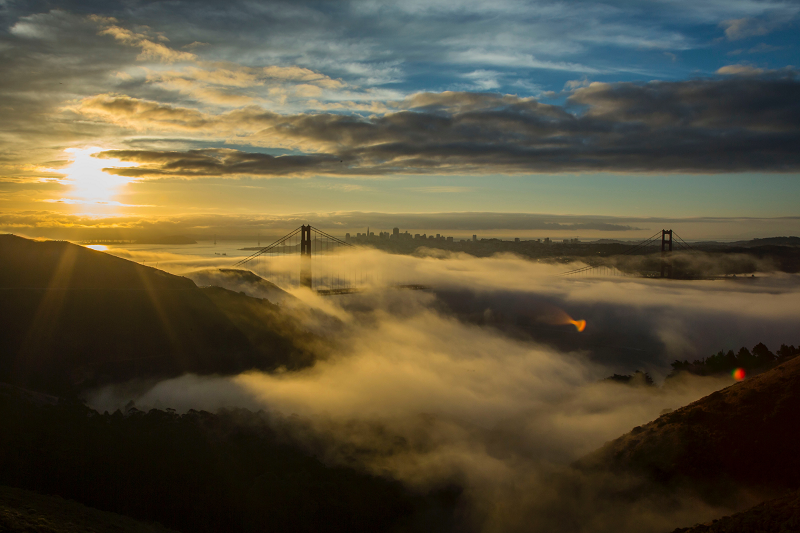
Photo by: Jakub Gorajek
Photographing Sunrises and Sunsets
Sunrises and sunsets are one of the most popular landscape photography scenes for a reason –they’re breathtaking! We all know that the colorful display of a spectacular sunrise doesn’t last forever, and if you want to capture some truly stunning sunrises or sunsets, you have to be there when they are. You’ll also want to look to capture images during golden hour, that time of day just after sunrise and again right before sunset –when the sky is awash in a beautiful golden glow.

Photo by: Daniel Páscoa
Look to Capture Clouds
While we often wait until the sky is clear to get the camera out, clouds can help to add interesting detail to your images. Unlike a blue cloudless sky, cloud formations can help to break up the monotony of a flat stretch of color and balance you the details found on the land.
Photographing Storms
A storm can be great opportunity for capturing dramatic sky images. Just before a storm when the dark clouds are rolling in, and again after the storm when light rays are streaming through the clouds are some of the most spectacular times for creating landscape images.

Photo by: Dmitry Sovyak
Position the Sky
When creating sky landscape images, consider whether the sky should be the main focal point –or simply a supporting detail. This will help you to determine where to place the horizon when composing your shot. If the sky is average and you’re not looking to include much of it in your image then position the horizon higher up in your viewfinder to capture more land than sky. But if you’re looking to capture a dramatic sky –and have it feature as the main point of interest, then lower the horizon so that more sky’s in your image.

Photo by: oldskool photography
Keep Compositional Details in Mind
When creating your images, be sure to keep in mind other compositional elements as well. Including some interesting details in the foreground –like a fallen log or even some wildflowers or a boulder can help to anchor your image –and lead the viewer into the image, especially if you’re using a wide-angle. On the other hand, you could instead create an image that features distant elements in your composition –like a far-off tree or a lone mountain on the horizon. In these cases, you may want to use a telephoto lens to help draw those distant elements closer.
Choose Your Lens
While it isn’t a hard rule, in many cases using a wide-angle lens can help you to capture spectacular images of the sky. A wide-angle can help to accentuate the sense of distance in an image, causing far-off mountains to appear farther away. It also enhances the sense of scale so objects in the foreground appear larger and more prominent. A wide-angle lens can also allow you to capture the most variation of light and color –especially during a sunset or sunrise.
Use a Long Exposure
While long exposures are often used when shooting rivers or rushing water, they can be especially good for clouds as well. When a storm is rolling in or clouds are moving across the sky, using a long exposure will blur the movement of the clouds allowing you to create images that feature soft, wispy clouds. Just be sure to bring along your tripod to steady your camera during longer exposures.
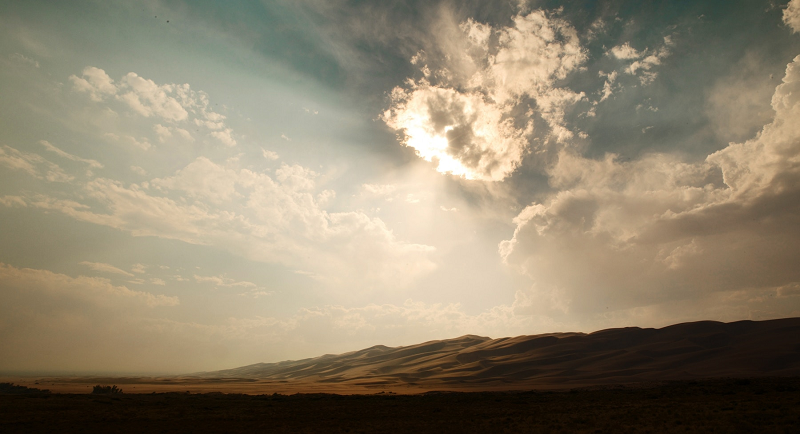
Photo by: Todd Quackenbush
Consider Bracketing
When photographing the sky, the exposure can be notoriously difficult to get right. For this reason, you may want to consider bracketing. With bracketing, you can shoot one picture with your default settings, while also automatically taking two more shots as well –one that’s overexposed by half a stop and one that’s underexposed by half a stop. Check to see if your camera has an automatic bracketing option you can use.
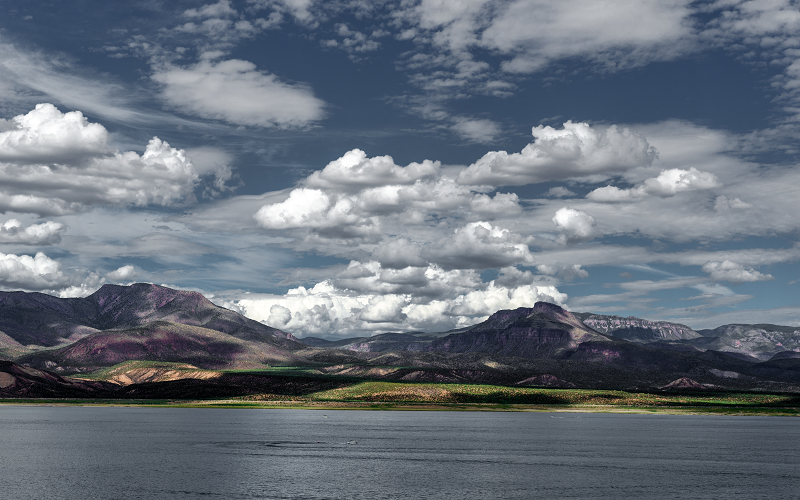
Photo by: Ganapathy Kumar
Use a Filter
If you have a filter, now is the time to get it out! A polarizer or a GND filter, often, can help a sky to look its best. Use a GND filter if you’re looking to balance out the different exposures required for a bright sky and darker foreground. And use a polarizer if you’re hoping to draw out the clouds from the background, and render the sky a deep, vibrant shade of blue.
Creating spectacular sky images can take some time and practice, but above all it requires patience. When you’re watching a storm, don’t leave immediately after –instead stick around a bit and watch as the light changes. Likewise when capturing sunsets, pay attention to the differences in how the sky looks from one minute to the next, and have your camera on-hand ready to capture those changes. Soon you’ll be adept at reading the sky and being able to sense when there’s a good opportunity coming up –and will have some amazing photos to show for it.
All the best in your outdoor photography adventures!
Do you enjoy capturing sky images? Share your favorite tip
